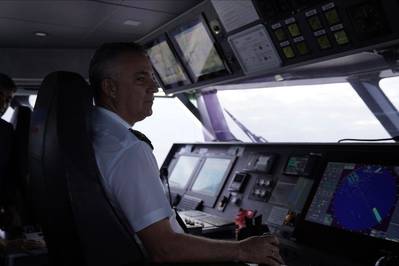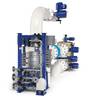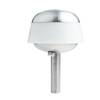AI Anti-Collision Technology Installed on Fast Ferry
Fred. Olsen Express, a Canary Island-based ferry company, is installing SEA.AI anti-collision technology on its ships to boost navigational safety at sea. The move is a world first for fast passenger ferries.
At present AIS can display and identify maritime traffic superimposed over an electronic chart that in turn indicates fixed features such buoys, beacons and other navigational marks.
SEA.AI can alert navigators and officers on the bridge to everything else floating on the water that has not been identified by these other systems. Crucially SEA.AI can identify targets and can automatically determine what is a potential collision threat and what isn’t. Once potential collisions have been identified, SEA. AI will automatically alert the crew.
The system uses an external unit, typically mounted at the highest point on the ship. This unit is fitted with two high resolution daylight cameras capable of operating in the lowest light and contrast situations. In addition, it has two thermal cameras, accurate to 0.05°C which enable SEA.AI to function at night. The cameras are both gyro and digitally stabilised to provide a constant watch 360° around the vessel.
With its cameras suitably mounted, SEA.AI’s Sentry (aimed at commercial and governmental ships) will identify larger vessels not fitted with AIS up to a range of 7.5km; smaller craft such as local fishing boats, dinghies and inflatables up to 3km and buoys and potentially dangerous flotsam up to 700m away. This latter feature, assisted by its thermal cameras, makes the SEA.AI Sentry an invaluable tool in man overboard search and rescue situations.
In practice the outputs from SEA.AI’s cameras eliminate the digital noise of the sea to determine potential targets in real time. The visual and thermal signatures of these targets is then compared to those within SEA.AI’s ever-growing proprietary database of millions of annotated marine objects.
The output can be shown on a display on the bridge or on a computer or tablet. The system is stand-alone and requires no internet connection.
Ivan Fernandez, Head of the Technical Department at Fred. Olsen Express, said: “This camera [SEA.AI] already has some incredible innovations because the technology has allowed us to incorporate more things [ such as the visual validation of radar targets]. It has artificial intelligence, and it has imaging software that inform us of what we are seeing. At the end of the day, even though all high-speed ships are required to have two officers maintaining a constant look-out, it [SEA.AI] is like having a third officer also looking, because as soon as it detects any object it gives you a warning saying something is there.”
Launched in 2018 SEA.AI was inspired by collision avoidance technology developed for the automotive industry. Initially it was tested in the maritime world aboard shorthanded racing yachts competing in round the world races such as the Vendée Globe. Its product line has since developed with tailored equipment targeting all sectors of the maritime world.
The installation of SEA.AI for Fred. Olsen Express was facilitated by Aeromarine.














